Green Infrastructure
September 22, 2015
Overview
*The Problem (one of them, anyway)
*The Solution?
*Examples in Practice
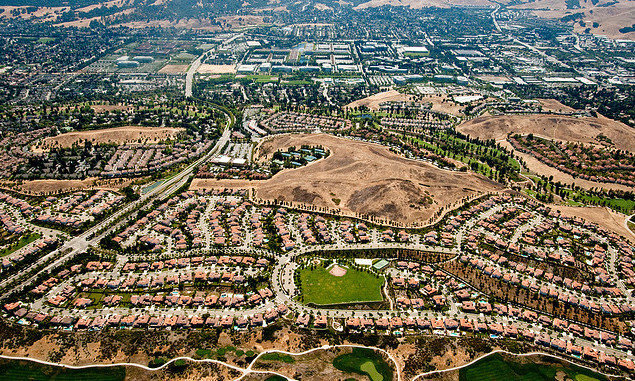

Leapfrog Development
Consequences of Leapfrog Style Sprawl
- Loss of Natural Areas & Habitat Diversity (Ex: Wetlands)
- Fragmentation of Open Space & Isolation
- Degradation of Water Systems
- Loss of "Free" Natural Services (Ex: Flood control, filtration, carbon sinks)
- Significant Investment in Gray Infrastructure Solutions
Not quite designing with nature.
Gray Infrastructure
Highly engineered, man-made components of an infrastructure network
Green Infrastructure
Engineering approaching that protects, restores, or mimics natural networks
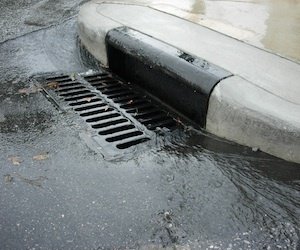
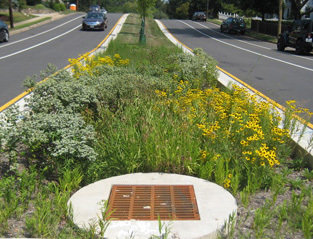
Green infrastructure is a new term, but not a new idea
- Evolved from cross-section of two earlier traditions:
- The inclusion and linking of parks and green spaces for benefit of people (think Central Park)
- The linking of natural areas to benefit biodiversity and habitat (think Yellowstone National Park)
- Rooted in land conservation ethic, but with urban twist
- In short: An interconnected network of green space that conserves natural ecosystem values and functions + provides associated benefits to human populations
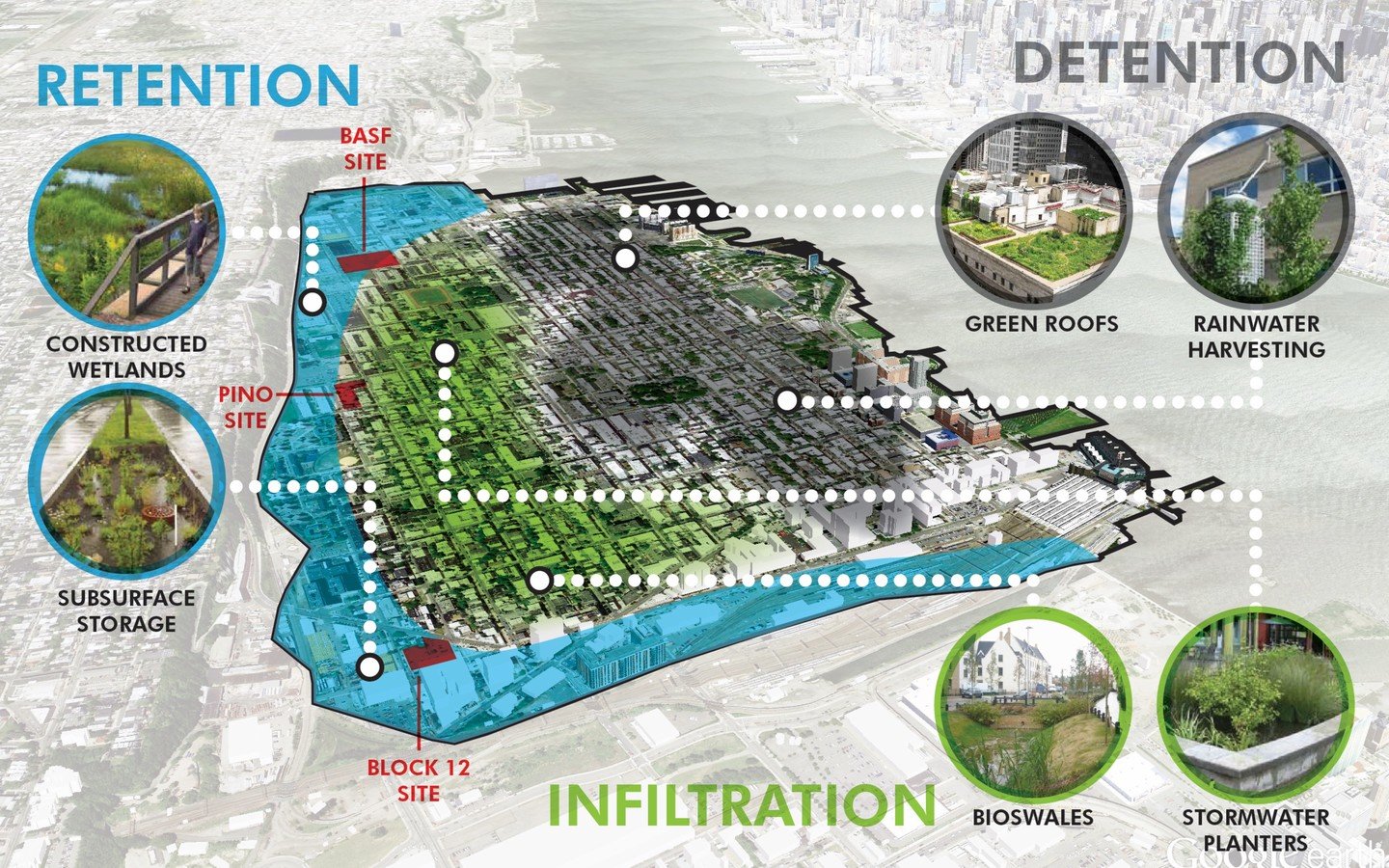
Green Infrastructure takes many forms and functions at many scales
Green Infrastructure captures the benefits & value of ecological services
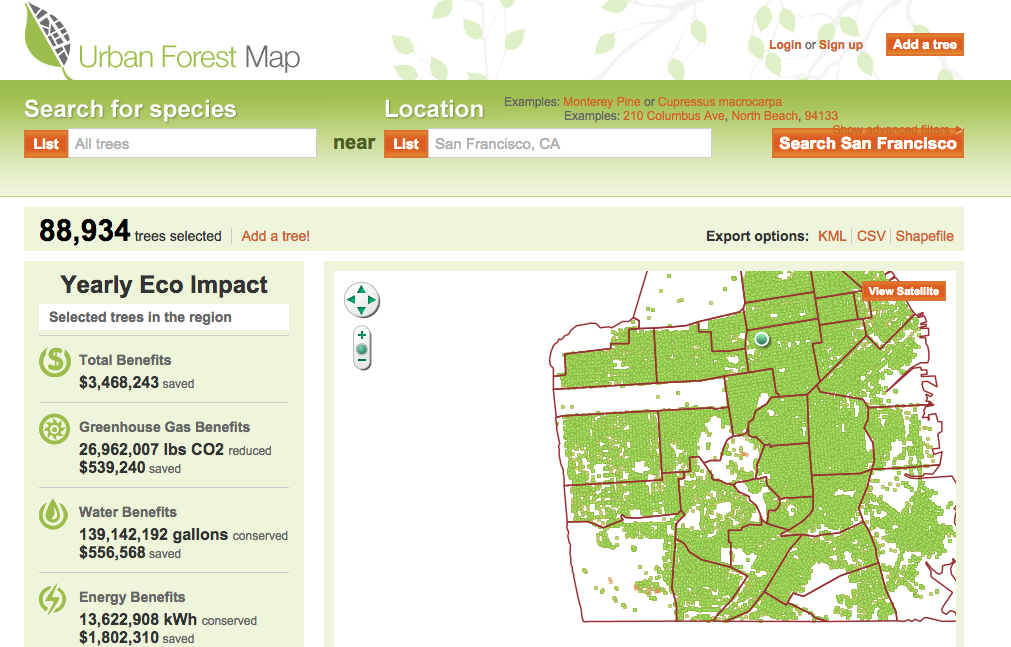
http://urbanforestmap.org/map/#
What sort of ecological services? You ask. Good question.
- Stormwater Management
- Flood Control
- Pollution Filtration
- Reduction in Heat Island
- Reduce Air Pollution
But how? You ask. Well, that's another good question.
- Rainwater Harvesting
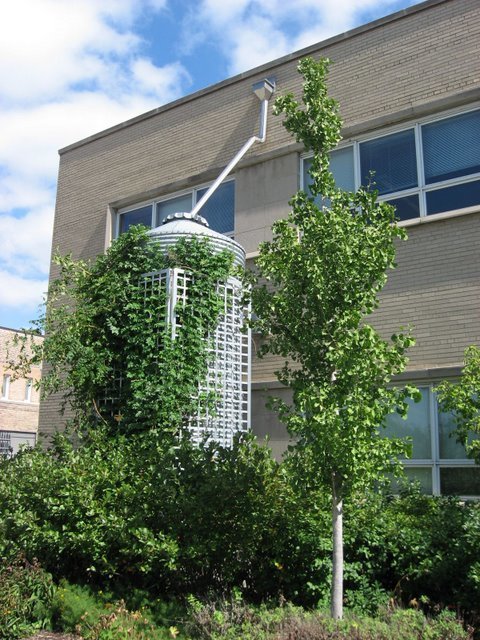
But how? You ask. Well, that's another good question.
- Bioswales
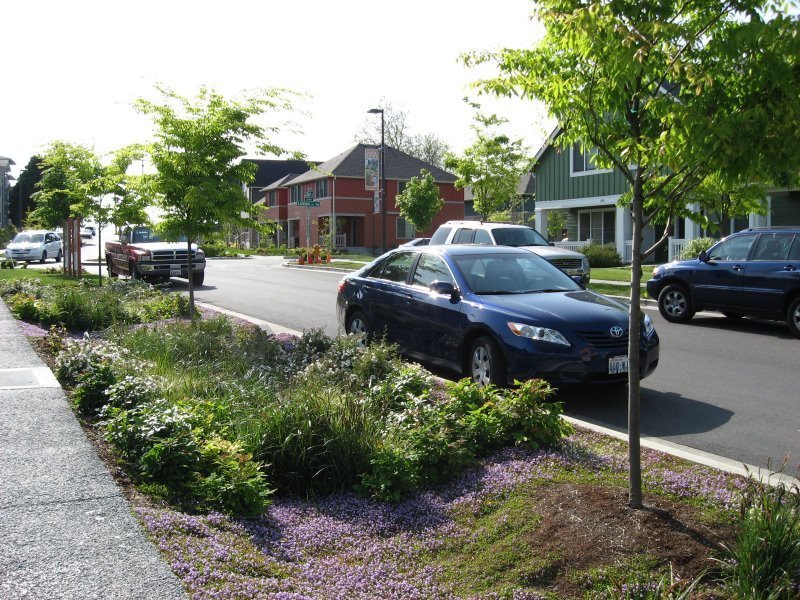
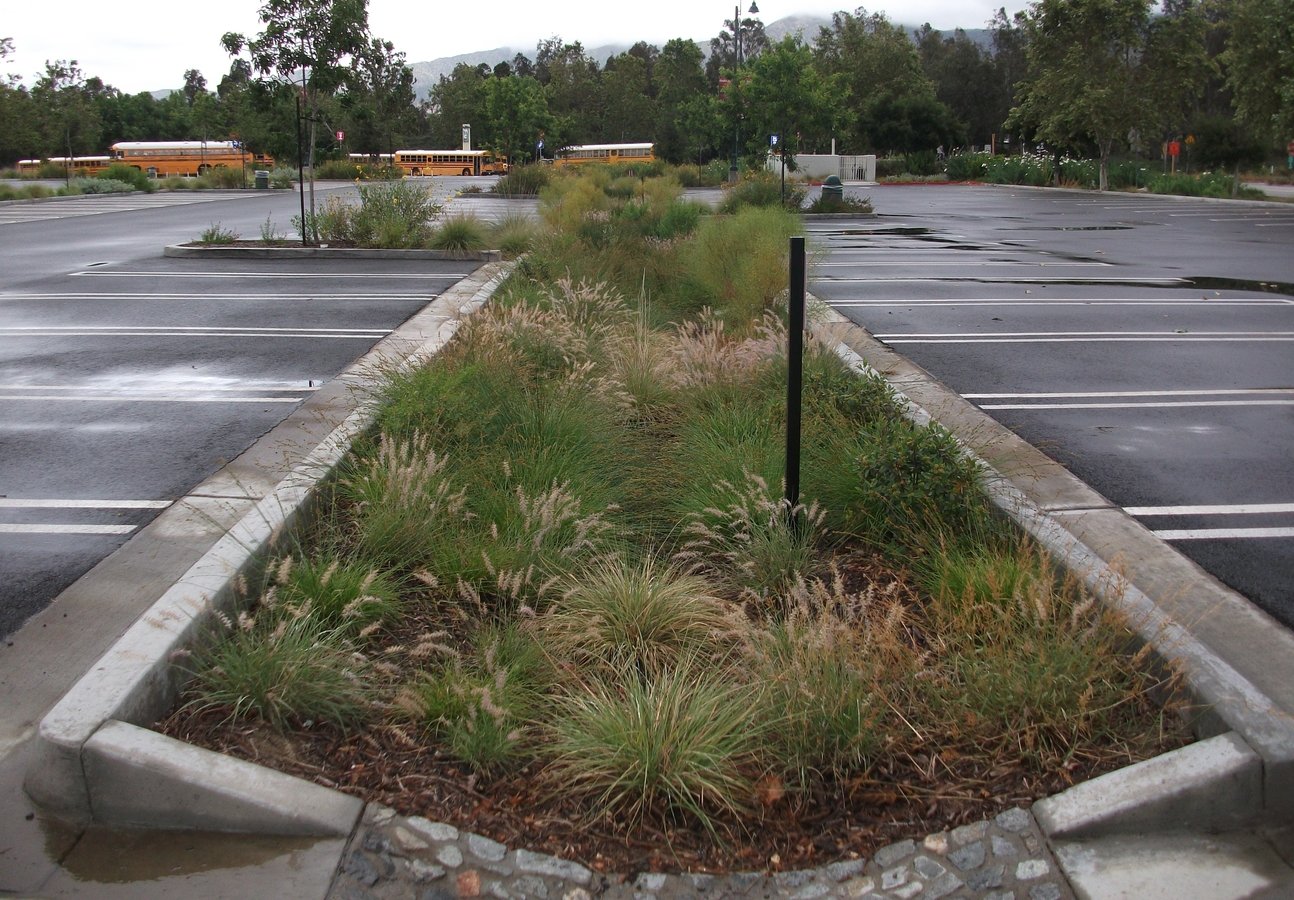
But how? You ask. Well, that's another good question.
- Green Roofs
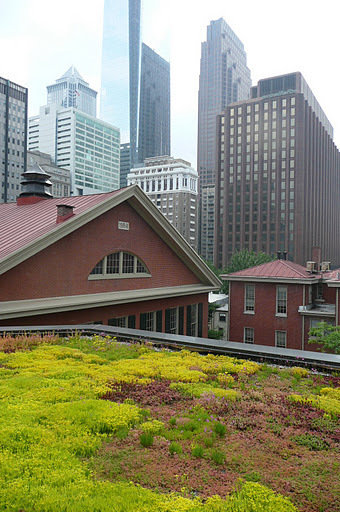
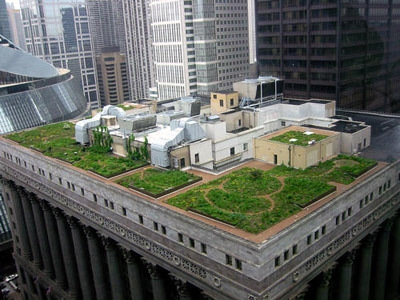
But how? You ask. Well, that's another good question.
- Urban Tree Canopy
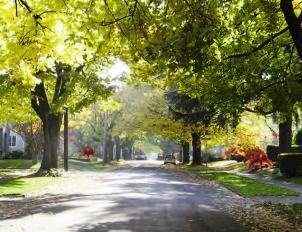
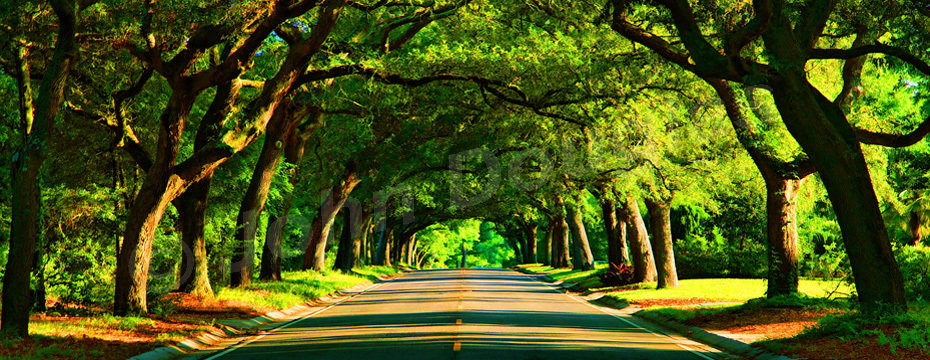
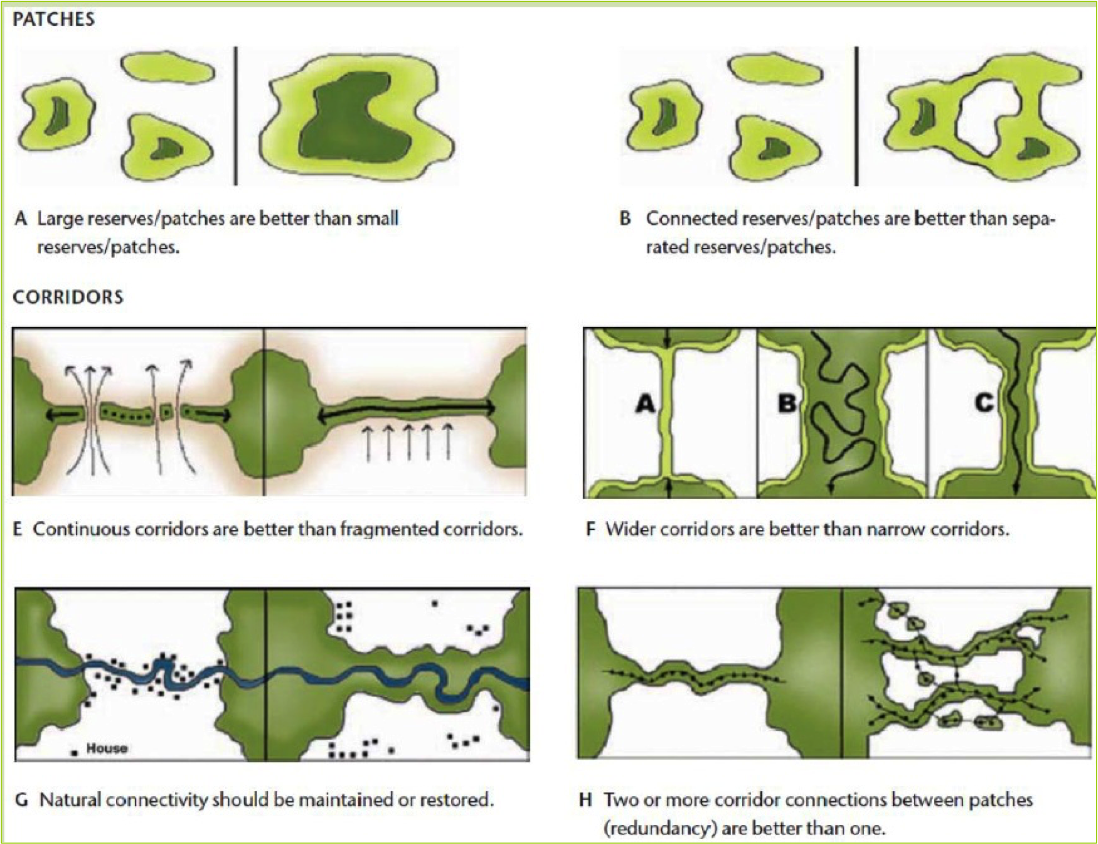
A system of hubs and links, cores and corridors
Hubs
Examples include local nature reserves, working lands, regional parks, community parks, and conservation areas
Links
Examples include landscaped pathways, conservation corridors, greenways, greenbelts, and eco-trail systems

Tallahassee Greenways Program
http://www.leonpenny.org/?project=greenways-master-plan
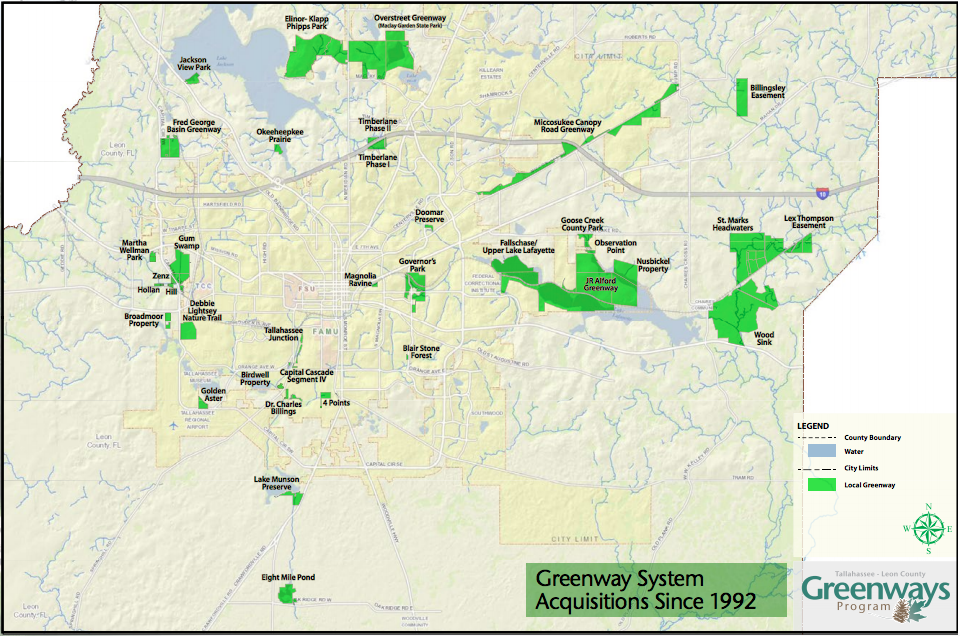
Example: Miccosukee Greenway
https://www.talgov.com/Uploads/Public/Documents/planning/pdf/environ/gwmp-2015-update-02.pdf
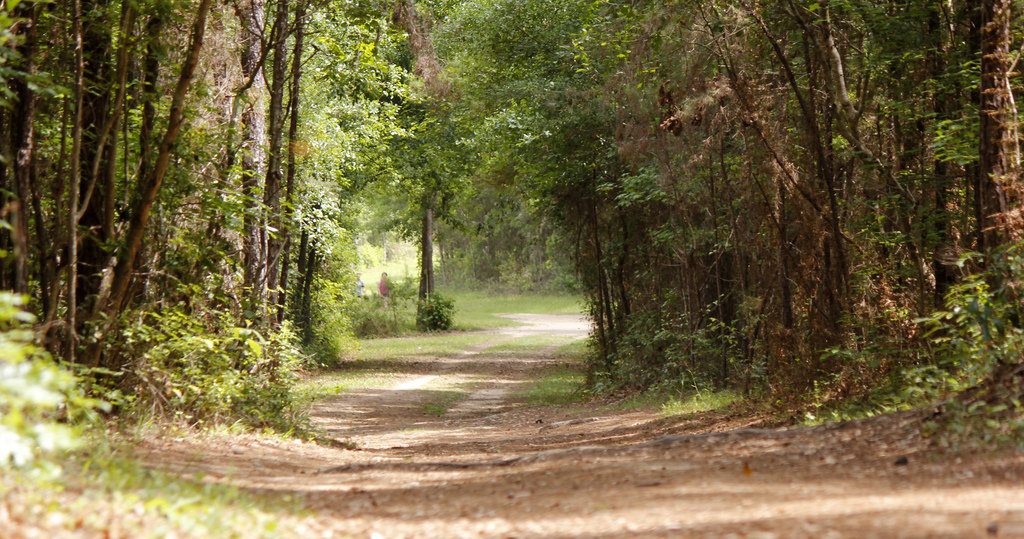
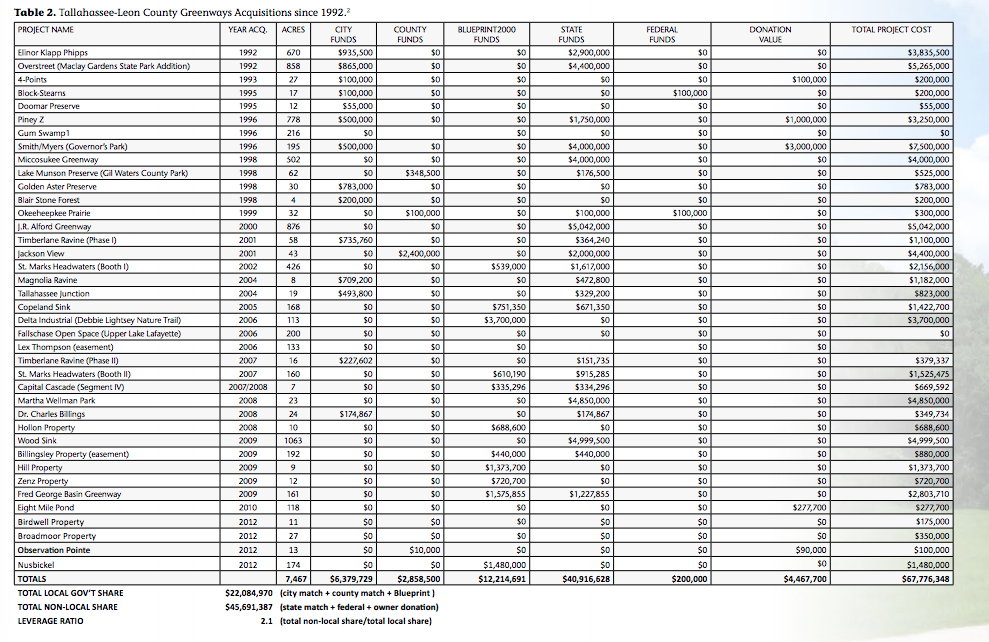
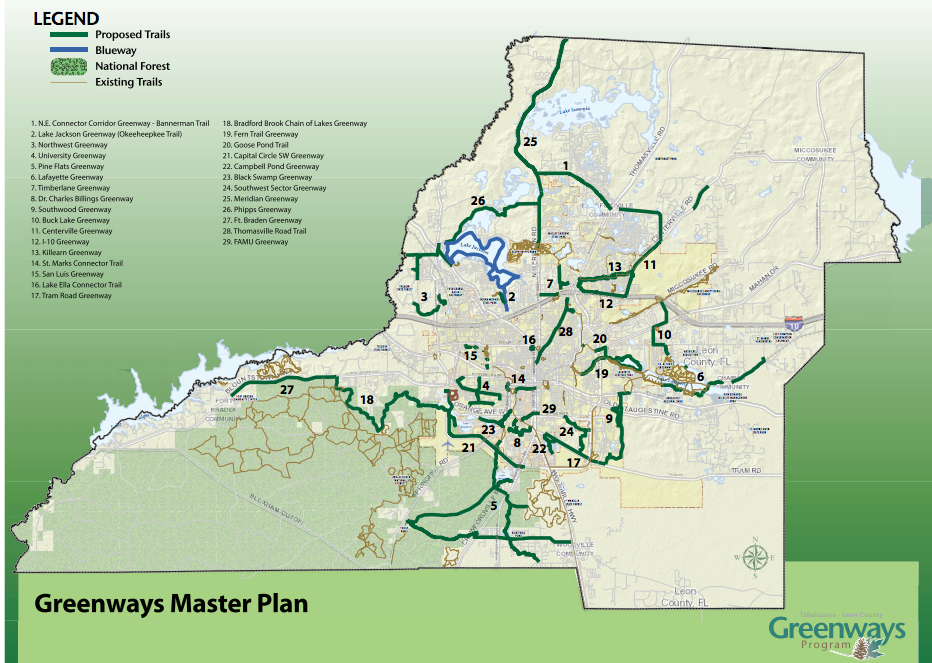
Local example: Tallahassee's topography is conducive to flooding
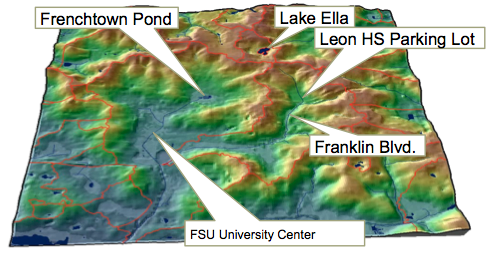
Cascades Park
Superfund site
- Liability for environmental cleanup fell on city
- Paid for by penny sales tax
Munson Slough watershed heavily polluted over time as it received runoff and contaminants from most of Midtown & Downtown TLH
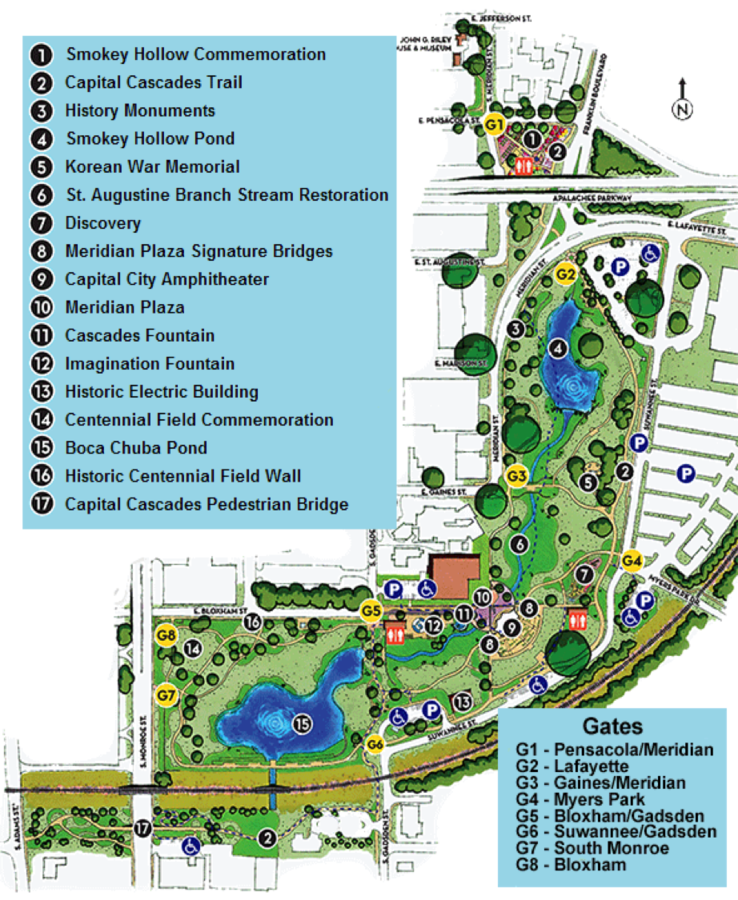

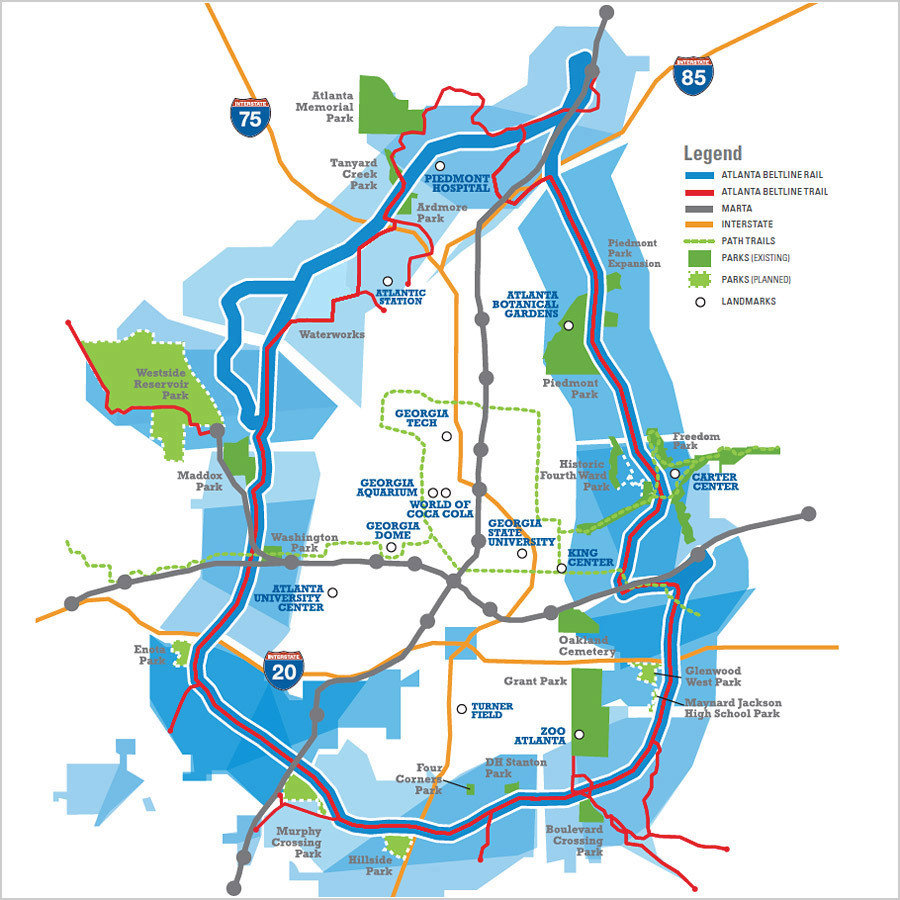
- 22 miles of former rail lines around Atlanta
- Redevelopment plans include series of interconnected green spaces, trails, and transit options
- Began in 1999 as Master Thesis from Georgia Tech urban planning student
Pollution Control via Low-Impact Development
September 24, 2015
Overview
*Low-Impact Development
*Suburban Example
*Urban Example
Pre-1970s
Structural Storm Water Management
Objective: Provide adequate stormwater drainage from developed land and attempt to control flood flows. Rise of Gray Infrastructure and "vacate water ASAP"
1970s - 1980s
Water Quality as Storm Water Management
Objective: Adequate drainage, but via management of floodplain development, erosion and sediment control, mitigate point source pollution, and detention facilities
1990s - 2000s
Low-Impact Storm Water Management
Objective: Adequate drainage by onsite mitigation of stormwater flows, infiltration, runoff treatment, protect/restore natural drainage channels with non-erosive velocities
2010 to Present
Sustainable Storm Water Management
Objective: Use watershed approach to integrate stormwater management, focus on water quality, stream/habitat restoration, and living community design that amenitizes SWM assets
In general, a shift toward less structural methods to stormwater management to low-impact development.
But why worry about stormwater management?
Mitigate flood damage
Prevent groundwater contamination
Prevent pollution of surface waters
Stream restoration
Habitat protection
Better aesthetics, better design, more livable communities
A method worth investigating:
Low-Impact Development
"An approach to land development that works with nature to manage stormwater as close to its source as possible." - EPA, 2013
Applicable to developing watersheds in urban, suburban, and rural settings.
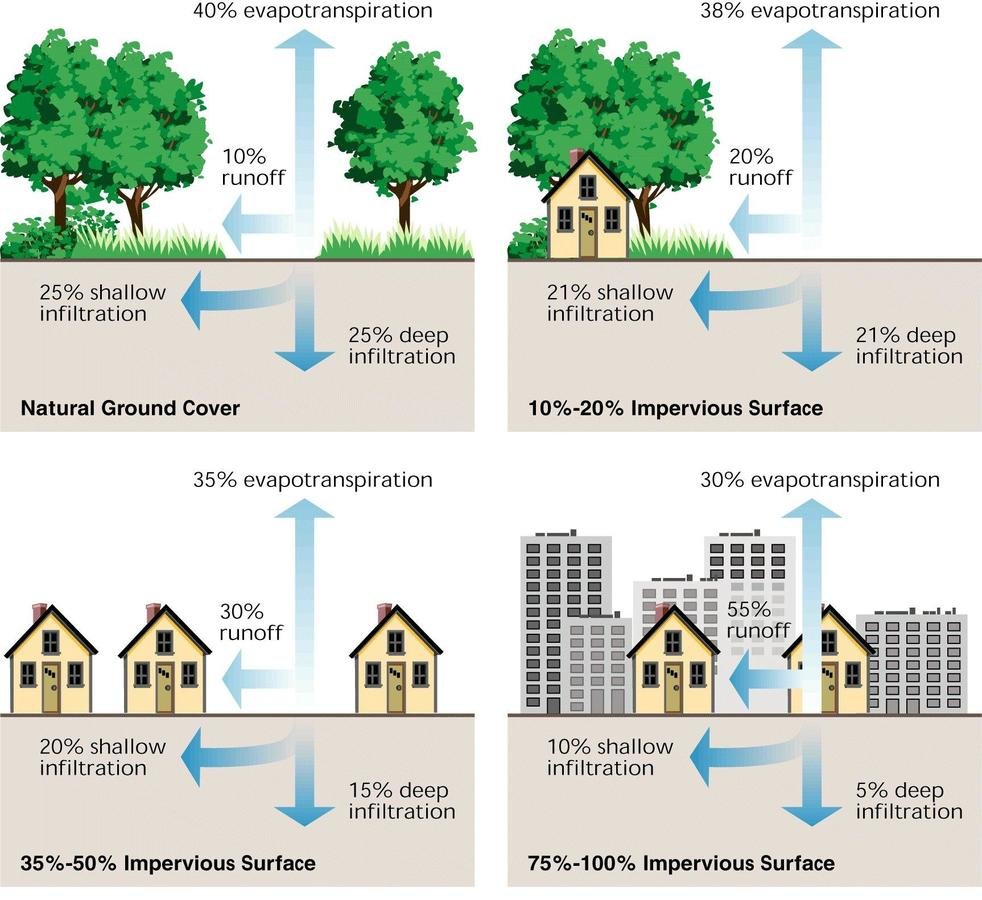
Low-Impact Development's Overarching Principles
- Source control approach: Manage upstream to protect down stream. Treat stormwater at site level.
- Micro-scale & distributed design features in contrast to large-scale & centralized SWM infrastructure (ex: series of on-site bioswales vs. single detention area with pipe to sewer)
- Emphasizes conservation to replicate pre-development hydrologic regime of watersheds through filtering, infiltration, storing, evaporating, and detaining runoff
Low-Impact Development's Implementation Practices
- Conservation and minimization: conserving natural conditions on site and minimizing imperviousness
- Landscaping: alter the terrain and vegetation cover to minimize runoff
- Storage: retain or detain rainwater to prevent or delay the generation of runoff
- Conveyance: convey runoff through the site while providing infiltration
- Infiltration: capture runoff and allow it to infiltrate into the soil
What if stormwater isn't just a nuisance to manage, but a resource to utilize?
Alachua County provides a number of examples:
http://www.alachuacounty.us/Depts/epd/WaterResources/EducationalPrograms/Documents/Overview%20of%20Low%20Impact%20Development.pdf
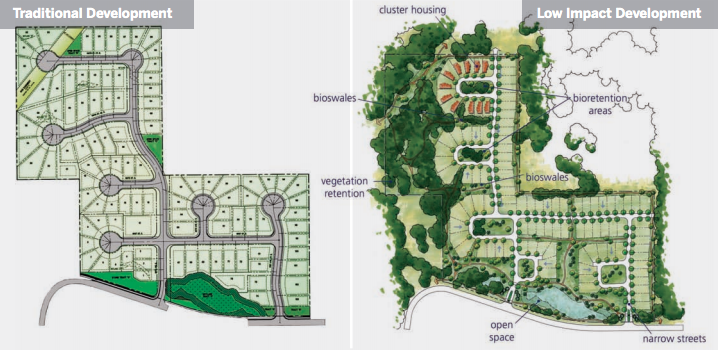
Using LID, improve site design. Cluster development in smaller area of site to preserve native vegetation. Minimize impervious surfaces and prioritize tree canopy.
Suburban Example
Patridgeberry Subdivision, Massachusetts
Patridgeberry, MA
- 38 acre parcel deployed as cluster development
- .2 acre lots with 28 acres of woodland left in native state
- Reduced all setbacks, narrowed streets, and shortened driveways
- 20 homes share common septic, not site by site
- Rooftops drain to drywells and infiltrates ground
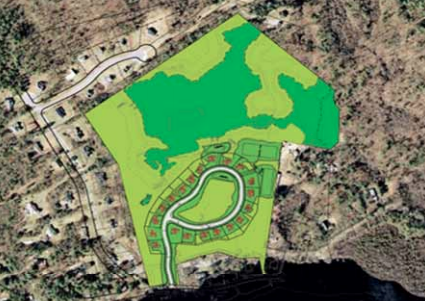
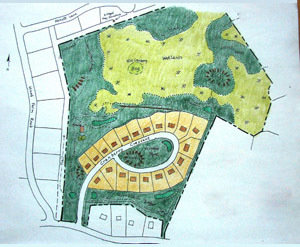
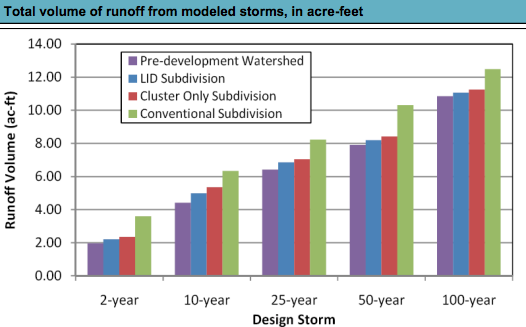
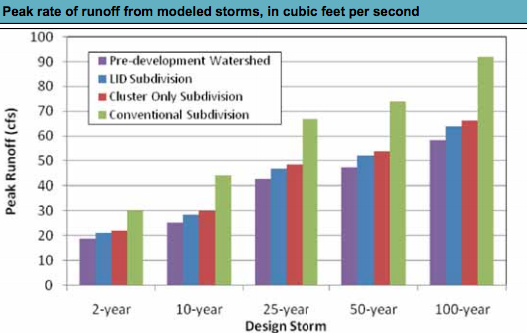
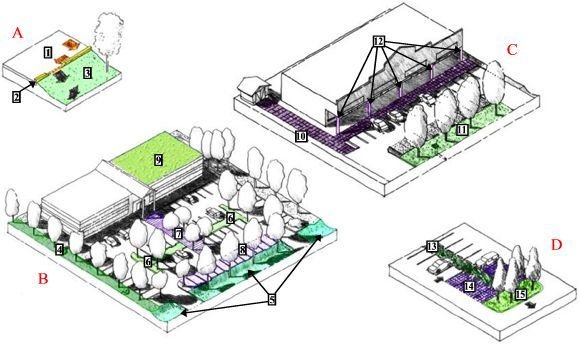
http://www.lid-stormwater.net/general_urban.htm
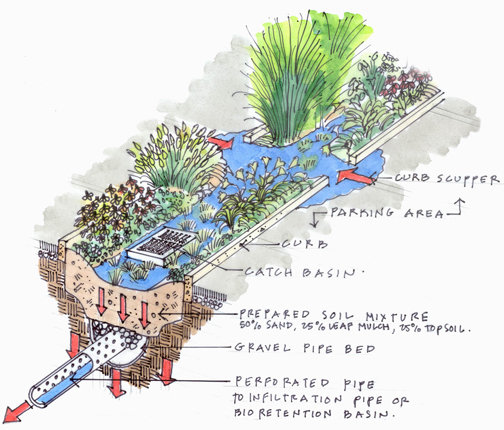
Urban Example
Florida Aquarium, Florida
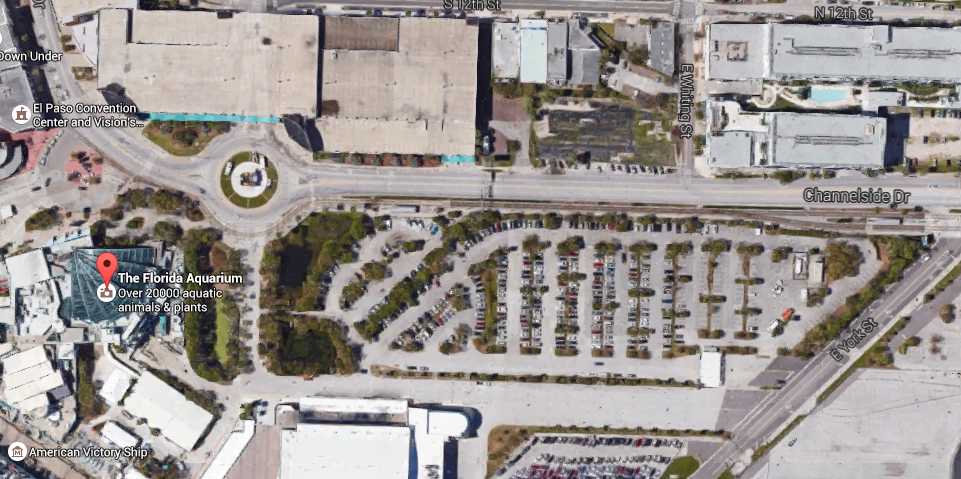
11.5 acre primarily asphalt and concrete parking area. Runoff retrofits proposed via end-of-island bioretention cells, bioretention swales around perimeter, permeable paving, small storage pond
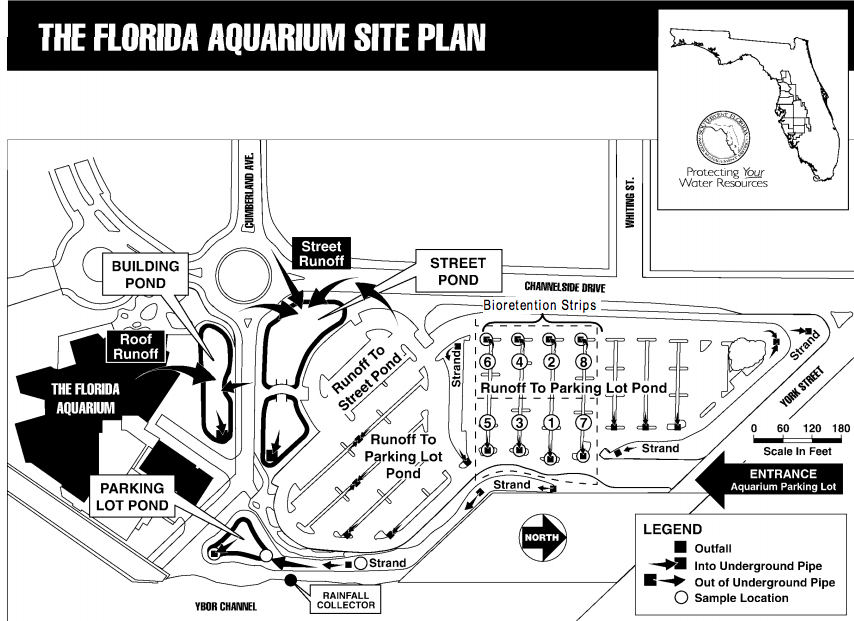
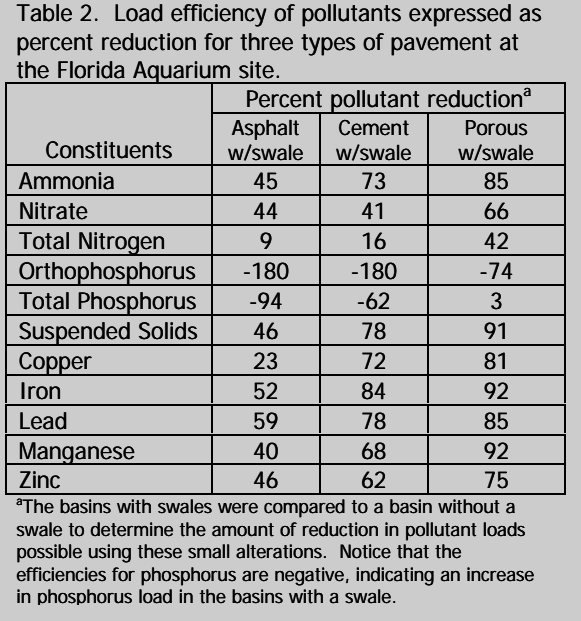
Dealing with Perceptions
- Uncertainty regarding effectiveness; countered by studies and pilot projects
- Up front capital costs are greater than traditional SWM infrastructure; turns out not always true, especially when full lifecycle costs are considered (O&M + replacement over time) and spill over benefits are given a market value and calculated
- Difficult to quantify untraditional metrics; can be true, but many communities are leading the way with benefit calculators to measure property value, pollution costs, etc.